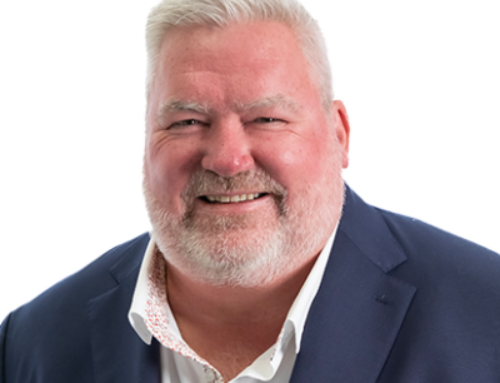David has 18 years’ combined experience in mechanical design, construction and architecture, with extensive technical experience in healthcare mechanical design, building services, plant design and project management.
Now a prominent member of our Auckland team, David recently joined NDY from our Tetra Tech High Performance Buildings Group colleague, Glumac. Based in their San Diego office as vice president and a senior mechanical engineer, he delivered design services and as senior leadership was also responsible for business development and growth.
Here are some reflections from David on his career to date, including one of his favourite projects, the University of California at San Diego (UCSD) Hillcrest Phase 1.
What inspired you to become an engineer?
My engineering inspiration was my dad, who was an electrical engineer for a major power supplier in the United States of America (USA) and got to travel all over the world seeing manufacturing plants and working to better the electrical grid that helped people. Seeing how my dad’s career took him to fun places and that he loved his profession motivated me to become an engineer.
Why mechanical engineering?
In high school I bought my first car, a 1965 Ford Mustang and instantly fell in love with working on it. It was the desire to design cars and engines that drove me into mechanical engineering. It turns out, at least in the USA, that designing cars meant living in Detroit, Michigan. I wasn’t ready to give up my Southern California lifestyle and got into HVAC engineering, which I think was a much better and interesting life path.
What’s your career highlight project?
I’ve been fortunate to work on multiple ‘once in a career’ projects, from massive combined cycle plants powering critical infrastructure, to marquee research laboratories. It’s been a blessing to deliver many exciting and technically challenging projects. A highlight is the University of California at San Diego (UCSD) Hillcrest Phase 1, which was roughly 22,000 m² of outpatient healthcare.
The building facilitated full-service healthcare, from operating theatres to procedure rooms, to state-of-the-art linear accelerator radiation chemotherapy. It was the first and cornerstone project for the entire redevelopment of the University’s Hillcrest Campus.
A key goal was to deliver this important new healthcare facility on budget. The owner’s project manager, Randy Leopold, wanted to rewrite how projects were delivered and formed a ‘one team’ approach. This meant the contractors, owners and engineers all had equal say. Trust was essential in making this work. It also eliminated finger pointing. Monthly team health checks were performed, allowing us to bring innovative and cost saving items to the table early and often.
Besides achieving great KPI’s alongside Randy, Glumac’s Science and Tech Sector Lead Nick Spath and the wider project team, it was the most collaborative and fun project I’ve worked on.
Tell us about the mechanical engineering on this project.
As a campus redesign, we were tasked with trying to integrate a new facility with an existing building while allowing for future construction of a new acute care facility. In California, healthcare is governed by government entity the Department of Healthcare Access and Information (HCAI), formerly called the Office of Statewide Health Planning and Development (OSHPD). They have very stringent rules between inpatient and outpatient facilities, including that a non-acute care facility cannot provide services for an acute care facility. Our building was classified as a non-acute care facility, so we could not build a central plant that was large enough to serve our building and the future facility as these buildings are designed, built and permitted very differently in the eyes of HCAI. The University overcame this by implementing two central plants for the campus, one for Hillcrest Phase 1 and one for the future acute care hospital.
Having two central plants is an operational disadvantage as you must provide staffing and oversight for two plants. As the mechanical lead, I suggested relocating the non-acute care central plant to a spot where the future acute care plant could be located next to it. With both plants physically located next to each other while meeting HCAI requirements as separate buildings, the design enabled operation by one facility engineering team. This was a big win and something the University had not considered possible.
Mechanical engineering solutions aren’t just limited to the mechanical plant but allow thinking outside the square with benefits for the entire team. For example, with sustainability a project KPI the team used heat recovery chillers and water source heat pumps that significantly reduced the building’s operational carbon footprint. By correctly sizing the heat recovery chiller, the facility can run on just the heat recovery chiller roughly 80% of the year, significantly reducing the carbon and energy usage. We exceeded local energy code requirements by 21% for energy use.
What innovative new approaches are you seeing when it comes to mechanical engineering?
When it comes to innovative new mechanical engineering approaches, one of the more interesting things I’ve seen came from one of Glumac’s clients. Kaiser Permanente has a strong sustainability and lifecycle cost focus, and they introduced post-construction engineering verification to assess the quality and accuracy of the engineering. Energy modelling and equipment selection can be full of risk reducing safety factors, and Kaiser Permanente noticed that their buildings were performing significantly better than anticipated, which meant they ended up buying bigger chillers, bigger air handlers, and these were operating outside of the equipment’s most efficient points.
The engineering verification process saw the equipment adjusted, reducing the capital expenditure of the health provider so they could spend that money on improving facilities and member experience.
I’m anticipating that we will see more clients taking a closer look at the safety factors and over-engineering in the coming years as a way to shrink first costs and operational costs.
If you’ve worked across regions, countries, and/or Tetra Tech operating units, can you tell us about the key similarities and differences you’ve encountered when it comes to mechanical engineering and your projects?
Taking advantage of the opportunities afforded us as part of the Tetra Tech family, transferring between operational units (or companies) was incredibly easy. For me, transitioning from Glumac in the USA to NDY in Aotearoa New Zealand (NZ) was as simple as gaining the right approvals. However, moving house was a different story! With the doors open internationally, it’s been great to experience the collaboration between the Tetra Tech operating units and build relationships around the world that positively inform my work.
Luckily the laws of thermodynamics don’t change between countries, but the measurement systems can!
Seismically, the two countries are very close in terms of what’s required for important buildings. The NZ code requires more bracing than the California seismic code does for healthcare and important buildings. In California, the mechanical equipment needs to be seismically rated, where they put the equipment on a shake table and test it for operability following a design seismic event. The idea is to ensure that the hospital or facility will be both standing and operational after a seismic event, and was proposed after the Northridge Quake in 1994, where the hospitals remained standing but the equipment and anchors failed, rendering the building uninhabitable.
Where do you see the future of mechanical engineering heading?
It’s interesting that most of the innovations within mechanical engineering, especially with reduction of carbon and energy usage, are centuries old. This includes elements such as choosing proper building orientation to maximise winter sun and minimise summer sun. Additionally, using thermal mass and natural ventilation and thermal chimneys are great for reducing energy and carbon consumption.
I see mechanical engineering moving more towards passive heating and cooling and natural ventilation, with less reliance on air conditioning systems to provide 100 percent of our heating and cooling. The drive to reduce carbon (both operational and lifecycle) and counteract the global climate crisis will undoubtedly lead to mechanical engineers designing creative solutions for the benefit of both occupied buildings and our environment.










